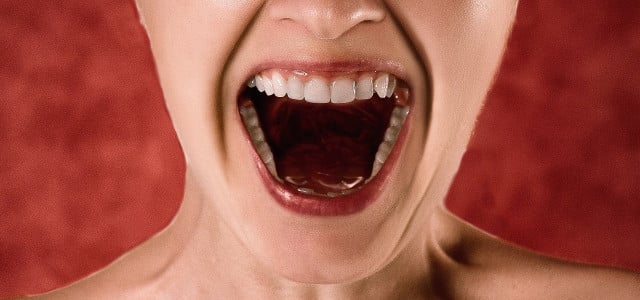
In misophonia, everyday noises trigger strong emotions in those affected and can therefore limit their quality of life. That’s exactly what the phenomenon is all about.
According to the Oberberg Clinics, misophonia, also known as “sound hypersensitivity”, is a phenomenon that has gained increasing attention in recent years. People who suffer from misophonia respond to certain sounds with excessively strong emotional reactions, often in the form of anger, annoyance, or frustration.
Particularly noticeable are everyday noises such as smacking, slurping, sneezing or typing on a keyboard. This phenomenon represents a challenge not only for those affected themselves, but also for their social environment.
Misophonia: A serious but little-recognized disorder
Misophonia is not just an aversion to unpleasant sounds. It goes far beyond the normal level of irritation. Those affected react to certain sounds with a strong emotional reaction, which can range from fear to disgust to anger.
These reactions can significantly impact daily life and lead to social isolation. However, according to the Ärzteblatt, the phenomenon has not yet been fully recognized as an illness. That’s not how the psychiatric manuals list them yet; This means that misophonia does not yet appear in any of the common disease classification systems. Above all, this means that those affected do not receive adequate medical support and often feel misunderstood.
A study from 2016, however, came to the conclusion that misophonia can be traced back to disturbed control mechanisms in the brain. According to the Ärzteblatt, a common characteristic for many of those affected is that they show above-average activity in certain brain regions when they hear the triggering noises. According to the study, regions that process and regulate emotions are among those affected. The so-called trigger noises therefore trigger unusually strong emotional reactions in those affected by misophonia.
The exact cause of the disease still needs to be further researched. Further scientific findings could lead to misophonia receiving more attention from experts, according to the Ärzteblatt.
Misophonia: Typical symptoms

(Photo: CC0 / Pixabay / 9767269)
When it comes to misophonia, the everyday sounds that evoke strong emotions can vary greatly from person to person. According to the Oberbergkliniken, typical noises that many affected people react to include:
- Eating sounds
- Clearing your throat
- Sniffling
- snoring
- Rustle
- Breathing sounds
- Footstep noises when walking
- Conversations
In addition to strong emotions such as anger, frustration, anger and aggression, the sounds that trigger misophone can also lead to physical symptoms. These include, for example:
- dizziness
- Sweating
- shallow breathing
- nausea
- Tingling on the skin
In addition, those affected can develop strong feelings of guilt due to their perceived anger, according to the ORF. This is especially true if you do not know that you have a specific illness. If they are unable to avoid the corresponding noises, feelings of helplessness can also arise.
Handling and treatment
Since misophonia is not yet recognized as a disease, there is little information about treatment options. A 2020 study concludes that cognitive behavioral therapy could ease symptoms. The researchers were able to determine both short- and long-term success among those affected. This form of therapy focuses on self-observation. Patients should register their reactions and emerging feelings so that they can then consciously do something about counteracting them.
Psychologist and misophonia researcher Jane Gregory also explained to ORF that it is a great relief for many of those affected to finally be able to name the phenomenon. This means those affected know that they are not alone with their feelings.
Living with Misophonia: Tips and Strategies

(Photo: CC0 / Pixabay / whoalice-moore)
To at least reduce the negative effects of misophonia on your everyday life and your attitude to life, the following coping strategies can help you:
-
Communicate openly: Explain to those around you that you suffer from misophonia. Emphasize that it is an illness and that your brain reacts differently to certain sounds. The fact that you react with strong anger to supposedly “completely normal” noises has a clear pathological cause. In order to illustrate the severity of the reactions, it is recommended to use the word “trigger” for the respective noises. You can find out more here: Trigger warnings: What they mean and why they are so important.
-
Create trigger-free places: In order to recover from everyday life and find yourself again, you should create trigger-free places from time to time. For example, you can use noise-canceling headphones and a noise app to block the triggering noises. It is also worth agreeing on clear “noise rules” in the household with your family or roommates; So you don’t have to worry about being exposed to the corresponding noises at home.
-
Mindfulness and relaxation: Meditations, progressive muscle relaxation and other mindfulness exercises can help you calm down after a tantrum. If you are more relaxed, you can potentially lessen the intensity of the emotions triggered.
- Acupressure and hypnosis are also said to be helpful for misophonia. However, these methods have not been scientifically confirmed.
- Last but not least, in science, behavioral therapy is primarily considered a proven remedy for misophonia.
Read more on Techzle\.com:
- Rare diseases: Why compassion opens wounds for those affected
- Adenomyosis: What is behind the form of endometriosis
- Cleaning headphones: This is how it works for different models